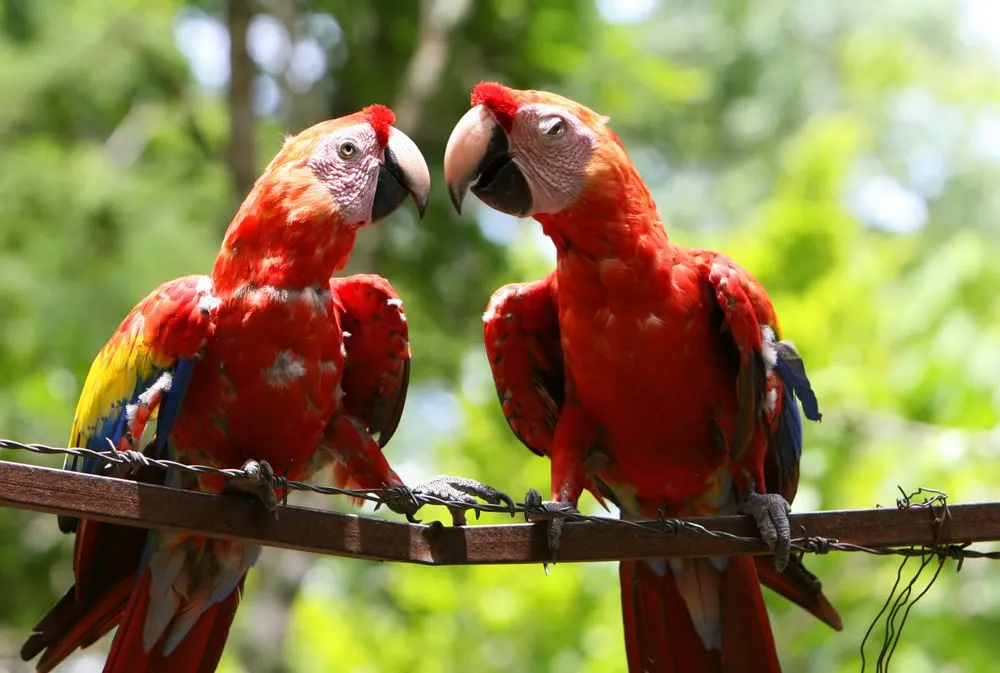Aug 28, 2012
|Last updated on November 30th, 2020 at 07:20 am
Peru Amazon Lodge Spotlight
Tambopata Research Center
Have you thought of visiting the Amazon Rainforest? Did you know that the Peruvian Amazon Rainforest offers an incredible amount of authentic rainforest activities and wildlife watching opportunities? Are you looking for an in-depth Amazon experience geared towards wildlife watching enthusiasts? Are you the kind of person who will wake up at the crack of dawn to spot a scarlet macaw? If you answered “Yes” to one or more of the questions above, we invite you to learn more about the Tambopata Research Center located in Peru’s pristine Amazonian forests.
About the Tambopata Research Center
The Tambopata Research Center itself is a comfortable Peru Amazon Lodge right on the bank of the Tambopata River. It is located in the middle of the uninhabited portion of the Tambopata-Candamo National Reserve, and it’s one of the most remote Peru Amazon Lodges available to the public. This eco-friendly lodge offers 18 rustic, comfortable rooms. Every detail maximizes the experience of living in the remote beauty of nature. Guest rooms have one open-air wall that faces the jungle. There are shared bathrooms and drapes instead of doors. There are also lightweight cane wood walls, and occasional electricity powered by a generator. Hot showers are always available, and all the beds have mosquito netting.
How to get to the Tambopata Research Center
To get there, you need to fly from Lima or Cusco to Puerto Maldonado, then be transported by truck to the Infierno River Port. There you board boats supplied by the Tambopata Research Center for a 2 hour, 30-minute trip upriver to Refugio Amazonas, followed by a 4-hour trip upriver to the lodge. Because the lodge is so remote, we recommend booking a 4-night program. The Tambopata Research Center is so deep in the Amazon Rainforest, that the first and last night is generally spent at the Refugio Amazonas. 
Activities at the Tambopata Research Center
Activities offered at the Research Center include visits to the clay lick and the Macaws Project. Visitors are able to interact with researchers who are studying the behavior of the macaws in this region. Researchers are even using satellite tracking to trace the flying patterns of macaws. A National Geographic article in 1994 made the Tambopata Research Center famous. Visitors are eager to see where macaws, parrots, and parakeets descend on a “clay lick”. According to researchers, the macaws and other parrots eat the clay to also help neutralize the toxins that can be found in other foods they eat.
Wildlife
Two of the most famous clay licks are at Manu and Tambopata in Peru!  Although the Tambopata Research Center is renowned for its research on macaws, it has much more to offer to its visitors. Additional activities include kayaking, standup paddleboarding, canopy climbing, and visits to the uninhabited heart of the rainforest. There is also a small jungle tower that offers a fantastic view of the palm grove. Wildlife watching might include sightings of peccaries, capuchin and squirrel monkeys, river otters, capybara, caiman, and of course, several species of birds such as parrots and macaws. Some lucky guests might even catch a glimpse of more difficult to spot animals like jaguars or tapirs.
Although the Tambopata Research Center is renowned for its research on macaws, it has much more to offer to its visitors. Additional activities include kayaking, standup paddleboarding, canopy climbing, and visits to the uninhabited heart of the rainforest. There is also a small jungle tower that offers a fantastic view of the palm grove. Wildlife watching might include sightings of peccaries, capuchin and squirrel monkeys, river otters, capybara, caiman, and of course, several species of birds such as parrots and macaws. Some lucky guests might even catch a glimpse of more difficult to spot animals like jaguars or tapirs.
Contact us for More Details
Visiting the Tambopata Research Center is simply a once-in-a-lifetime experience. Live in the midst of nature, where the sounds of monkeys chittering and the scent of the dense jungle are part of everyday life. Plus, it’s easy to combine a trip to a Peru Amazon Lodge with another Peru tour. Combine a 4-night stay at the Tambopata Research Center with a trip to Machu Picchu & Cusco, only a short flight away!
Watch our new video about taking a tour of the Amazon Rainforest:
Note: Photos of the Tambopata Research Center are courtesy of Rainforest Expeditions.
Mentioned in this article








